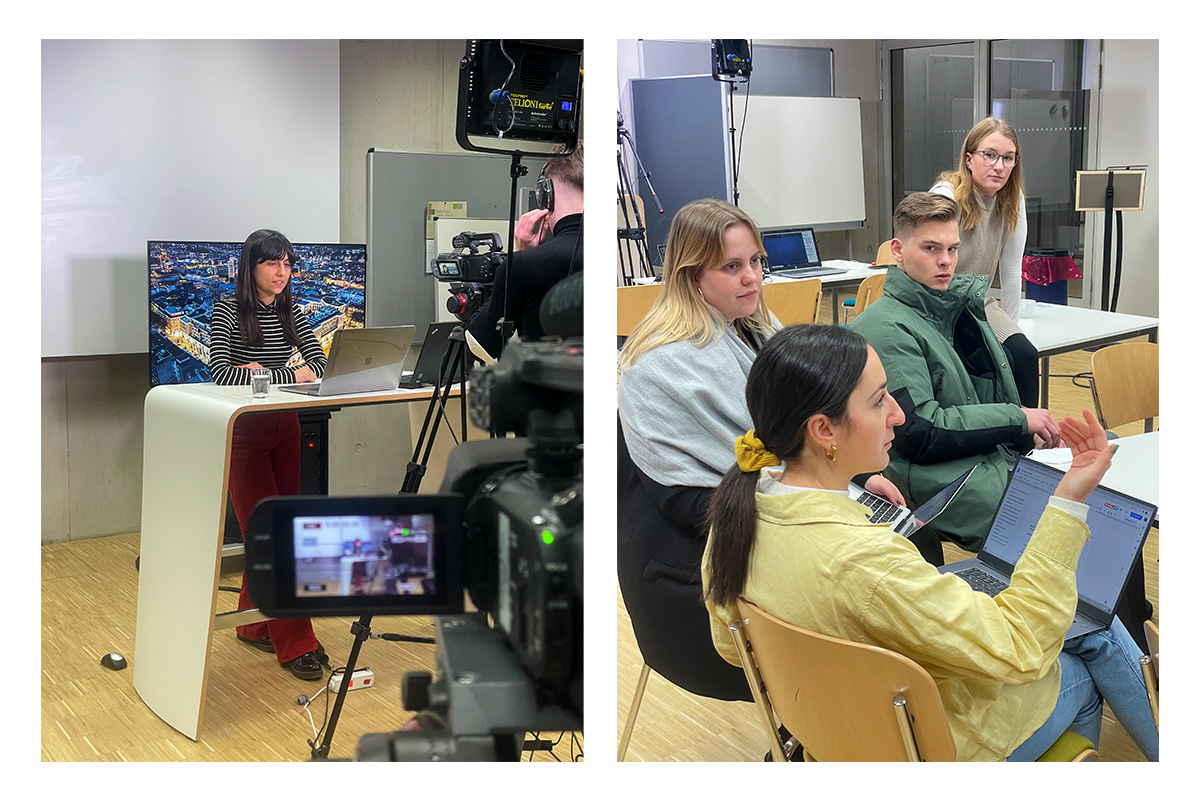Week 4: Meeting the media partners and matching of teams
Students form groups of three to five students to accept a challenge posed by a media partner. We collaborate with small partners who hope to gain something from working with students. Before students meet with their respective partners for the first time, teachers meet with every team to discuss ideas, strategies, and concerns. We found that it pays off to write down a working agreement including contact details and important dates. Students have difficulty picking up on the unspoken rules of the respective editorial team, so these rules have to be made explicit. We attend the first meeting between students and media partners to make sure that both sides understand the project in the same way.
Week 5: Dialogue with the audience
After having distinguished between different types of audiences, we motivate engagement with audiences on different levels. Some students have had experiences in moderating discussion forums or managing social media channels – and we ask them to share their experiences. In general, we feel that students have no objections against dialogue but hesitate a bit to actually engage in it. As we do not have a large audience to work with, we review the literature on audience engagement. We discuss strategies like the “ladder of engagement” which calls readers to action in small consecutive steps – gradually creating a stronger connection to the newsroom. We stress the importance of making it easy for the audience to contribute, and of making it clear why the contribution is valued and how it will be used journalistically. In this week, we invite guest lecturers who can report on their experiences of interacting with an audience. We also ask our media partners about their strategies in audience development and engagement. Turning to the practical aspects, we try out interviews with future-oriented questions in class. Later, students have to record two interviews with strangers on a given topic – one relying on critical questions, the other being more constructive. We discuss their experiences in class.
Week 6: Dialogue among the audience
We do not restrict our concept of dialogue to communication between journalists and their readers, but also highlight the benefits of facilitating dialogue among the audience. We analyse journalistic projects explicitly aiming at dialogue as, e.g., “Your country talks” by Die Zeit. We also discuss examples that Amanda Ripley has collected in her research on resolving destructive conflicts. Finally, we look at panels in which a representative sample of citizens discuss controversial political issues. We feel that journalism can learn from the success criteria of such “mini-publics.”
Week 7: First newsroom discussion: What do the media partners expect from us?
In our first “newsroom discussion” in class, we take stock of all kick-off meetings with media partners: Students present their story assignments and journalistic formats. Other teams are asked to give feedback. We check whether message and channel are suitable for the target audience.
Week 8: Workshop: Working with data
Constructive journalism emphasises nuanced reporting and often points to the statistician Hans Rosling as a role model. Because not all students are familiar with sources and analysis of data, this course includes a brief introduction to data and science journalism with exercises to be completed in class. The focus is on reading tables and graphs and assessing the method by which the data was collected. Also, we aim at a better understanding of the uncertainties involved. Constructive journalism deals with possible futures, after all.
Week 9: Second newsroom discussion: Does our research challenge our initial beliefs?
After having started research on the team projects, this “newsroom discussion” is to evaluate the initial findings. Our provocative question is: If students are not surprised by their research, have they learned anything at all? In our experience, the largest benefit of this discussion is when students start to brainstorm what other sources might be relevant for the stories. In other words, we look for additional data, additional experts and best-practise examples.
Week 10: Workshop: Moderating a debate
To demonstrate how productive a dialogue can be, we show students how to host a debate among themselves lasting for about 15 to 20 minutes. Students will take on different roles in this setting. In preparation, students not only have to inform themselves about the topic and think about questions to ask, they will also have to set up the rules of the debate. The aim is to assure all participants that they can speak their mind and that complex thoughts and mixed feelings will be valued. This experience is to motivate students to engage the audience of their media partners and include its contributions in their stories.
Week 11: Third newsroom discussion: What can we learn from our audience?
In this “newsroom discussion,” all teams introduce what they know about their target audience. Ideally, they also report on their first contacts with the audience. Together, we try to come up with other ways of including the audience in every team’s project.
Week 12: Workshop: Thinking about the future.
As constructive journalism tries to help society move forward, thinking and talking about possible futures becomes an important part of journalism. In this workshop, students are invited to sketch hypothetical but realistic scenarios – in pictures, videos, oral speech or text. The goal is to make clear that it does not matter whether the scenario is optimistic or pessimistic. It is more important to make it as concrete and interesting as possible so that it stimulates the imagination of the audience. In the end, it should facilitate discussion of the chances and risks associated with this particular future. The audience should be able see what it has to do to to make this future become real – or to avoid it.

Students preparing and moderating an online debate. (Photos HdM/Anna-Katharina Veyhl)
